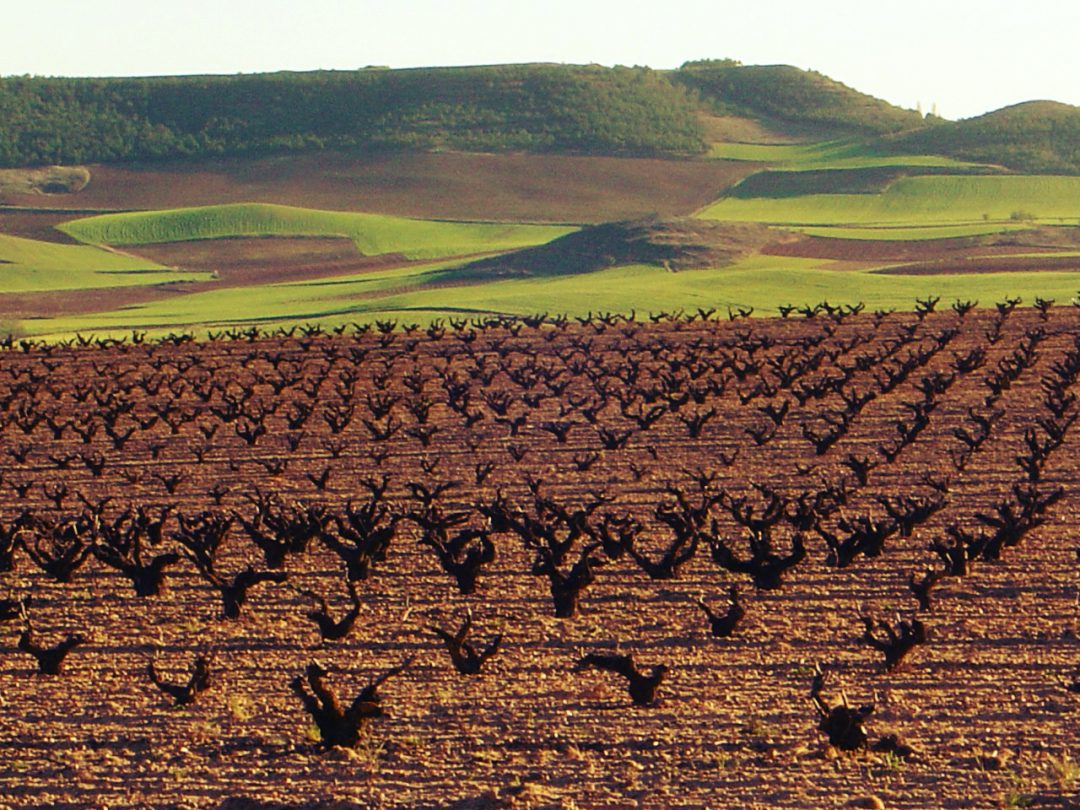
OUR VINEYARDS

JUST IN THE HEART OF RIBERA DEL DUERO
Weather
The specific climatic conditions that characterize vine growing in the Ribera del Duero have great influence throughout the vegetative cycle of the vines, playing a fundamental role in the development of the plant and the ripening of the grape. Of these special conditions depends, to a great extent, the quality of the wines obtained.
The climate of the Ribera del Duero is generally characterized by moderate to low rainfall (400-600 mm as average annual rainfall), coupled with its dry summers and long and rigorous winters and with marked thermal fluctuations throughout the seasons, frame it within a Mediterranean climate whose main character is continentality.
Soil
The Ribera del Duero is located in the great northern plateau of the Iberian Peninsula, formed by a great old zócalo devastated and, in part, covered by tertiary sediments. The largest volume of these sediments consists of more or less lenticular layers of silty or clayey sands, and highlights the alternation of layers of limestone, marl and even calcareous concretions.
The river basin, formed during the Miocene, presents horizontal levels, gently undulating, limited by differential erosion, and turned today to the state of penillanura. The relief of the area oscillates between the interfluvial ridges, with heights of 911 meters, and the valleys, with a topographic height between 750 and 850 meters.
29 VINEYARD HECTARES
Our best heritage
All the vineyards are located in Anguix, a little Village at the beginning of the Duero Valley. Anguix has 160 residents , the majority of whom are involved in the cultivation of sugar beet, cereal crops, and mainly to wine production.
Of the 29 hectares plantea, 15 are actually used to form the backbone of the wine: Vines of Tinto Fino grafted with our own clones by means of mass selection. Most of them come from small faros (La Cañada, El Val, Los Astrales,…) facing north – south and with a density of 2.200 vines per hectare.
The younger vineyards were planted mostly with Tinto Fino with a density of 3.500 – 4.000 vines per hectare. This closer plantation helps to control the vigor and yields.


THE WORK IN THE FIELD
Respect to the raw material: the grape
The yields fluctuate between 2.500 and 4.000 Kg. per hectare with two risk factors which some times can seriously reduce the vintage: The Spring frosts and the long droughts in dry years.
Vines are growing in bush with a difference in relation to other vines in the Duero Valley. In Anguix the trunks of the vines are shorter. At this lower height the plant is more shielded from the wind which contributes to the accumulation of poliphenoles and sugars.
At the end of May a second pruning is made to air the stock and avoid excess vegetation. A light crop thinning of bunches before the “envero” I essential to establish a balance vigor – production without give way to an excess of concentration.
Weed killers are not used. Weeds are eliminated by working the soil; the supporting fauna of the soil is respected, using only sulphur treatments which are only administrated if the malady can not be eliminated in a natural manner.
The harvest begins between the 8th and the 12th of October and it is usually a week long. Fruit is hand sorted and stored in 12 kilos bins.
THE ESSENCE OF THE RIBERA DEL DUERO
